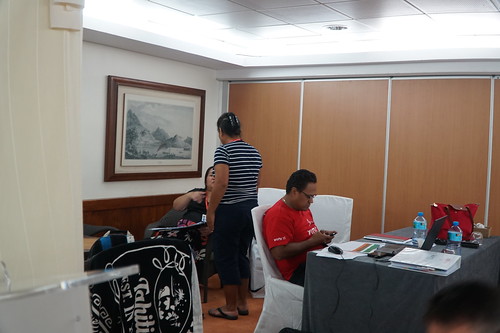
Last week, the Pacific Islands Telecommunications Association (PITA) held their 20th AGM (PITA 20) with the theme ‘Developing Smart Islands and Telecommunications in the Pacific for the next 5-10 Years’.
APNIC staff were among the 400-plus people who attended the four-day meeting held from 25 to 29 April 2016 in Tahiti, French Polynesia. Other attendees included numerous ministers and senior officials (attending the High-Level Leaders’ meeting), as well as representatives from Pacific telcos and ISPs, governments and regulators.
This PITA meeting was especially well-attended, and well-supported by a long list of sponsors. The program covered many important issues for the region including new satellite services and technologies, undersea cable developments, network interconnections, and disaster planning.
The PITA AGM also marked the end of Ivan Fong’s two terms as PITA’s President. Sione Veikoso, Deputy CEO of Tonga Communication Corporation, was nominated and elected as the new President during the meeting, and becomes the first Tongan to hold this position.
APNIC activities included:
- Paul Wilson, APNIC’s Director General, presented on IPv6 deployment trends and its importance in the Pacific.
- Elly Tawhai, APNIC Senior Internet Resource Analyst, spoke at the cybersecurity session on APNIC’s security initiaitves, including providing training and organizing a potential FIRST Symposium in the Pacific later in 2016.
- Paul participated in the PITA Leaders Forum. This was a closed session, and included the President of French Polynesia, the Deputy Prime Minister of Tonga, Ministers from the Solomon Islands, Niue, Samoa, Tokelau and Tuvalu and senior officials from the Cook Islands, Fiji, and Vanuatu.
- Elly met with several Members to discusses their resource requirements, future training activities, IPv6 transition and IPv4 transfers.
- Paul also met with representatives of regional organizations including PITA, ITU-ASP, PIRRC and APT, and discussed training and technical assistance activities.
The views expressed by the authors of this blog are their own and do not necessarily reflect the views of APNIC. Please note a Code of Conduct applies to this blog.

